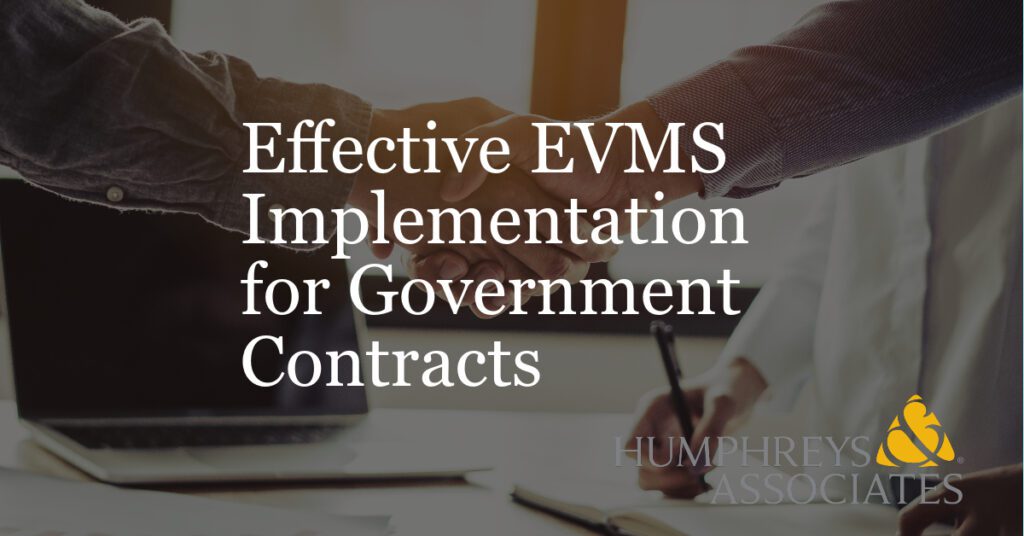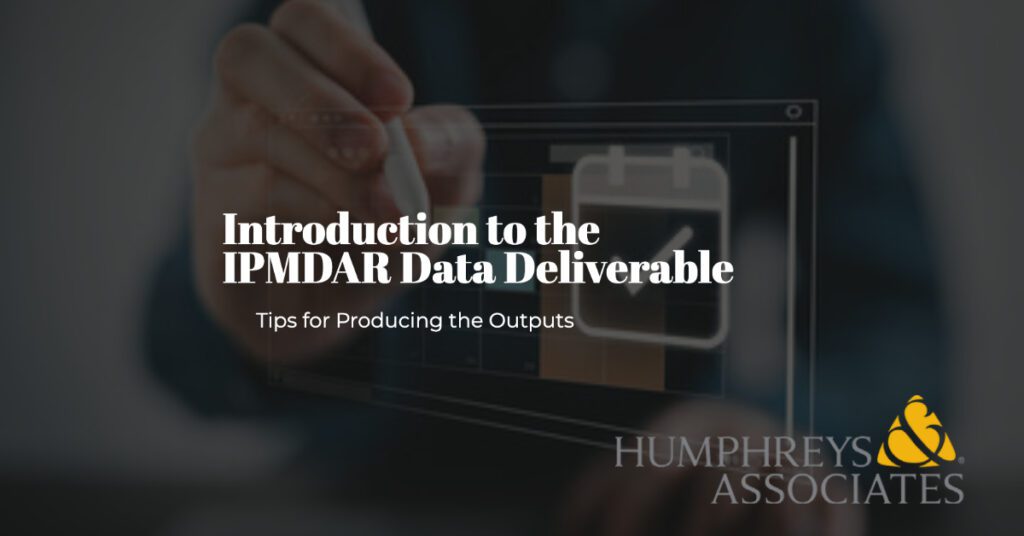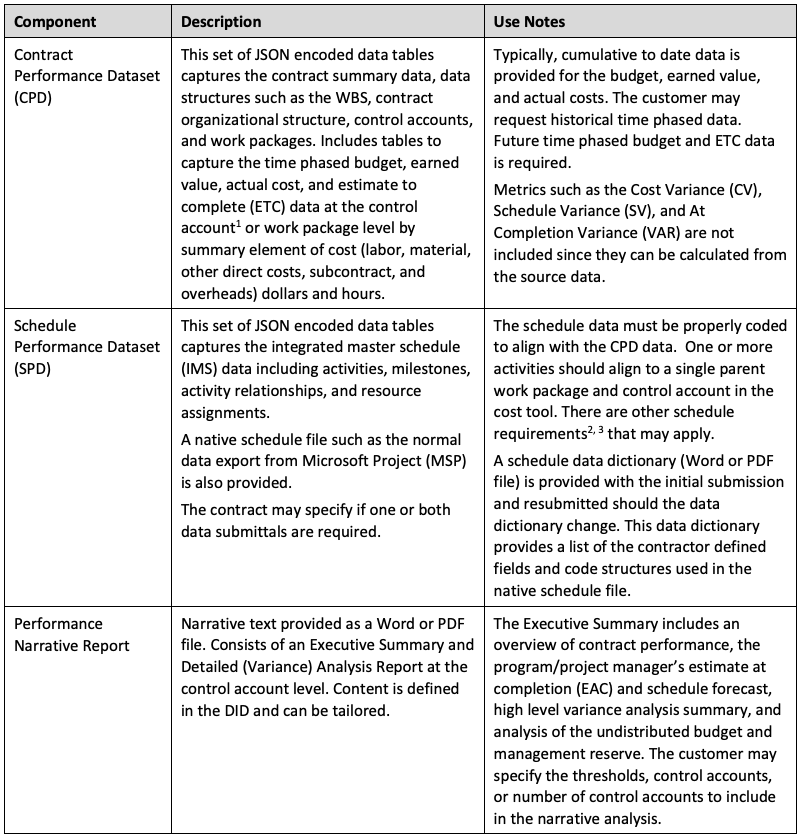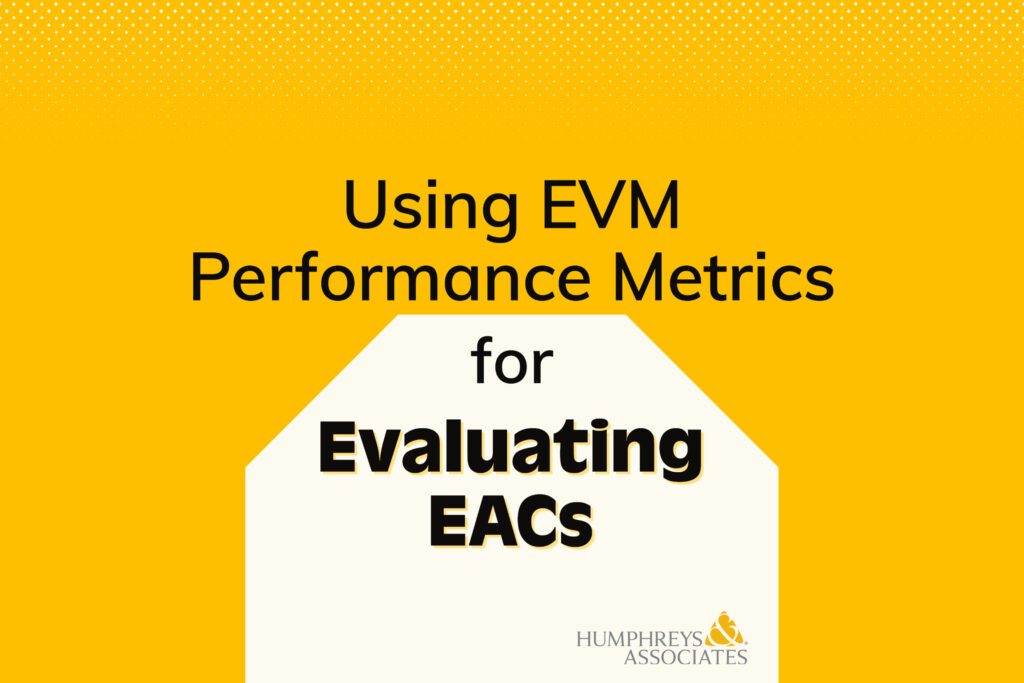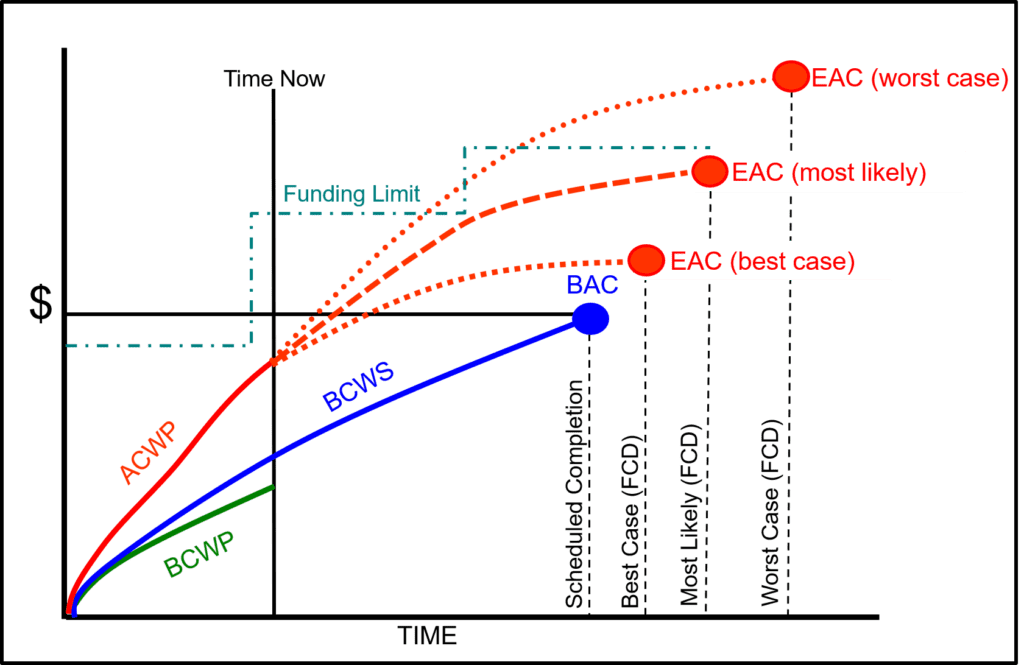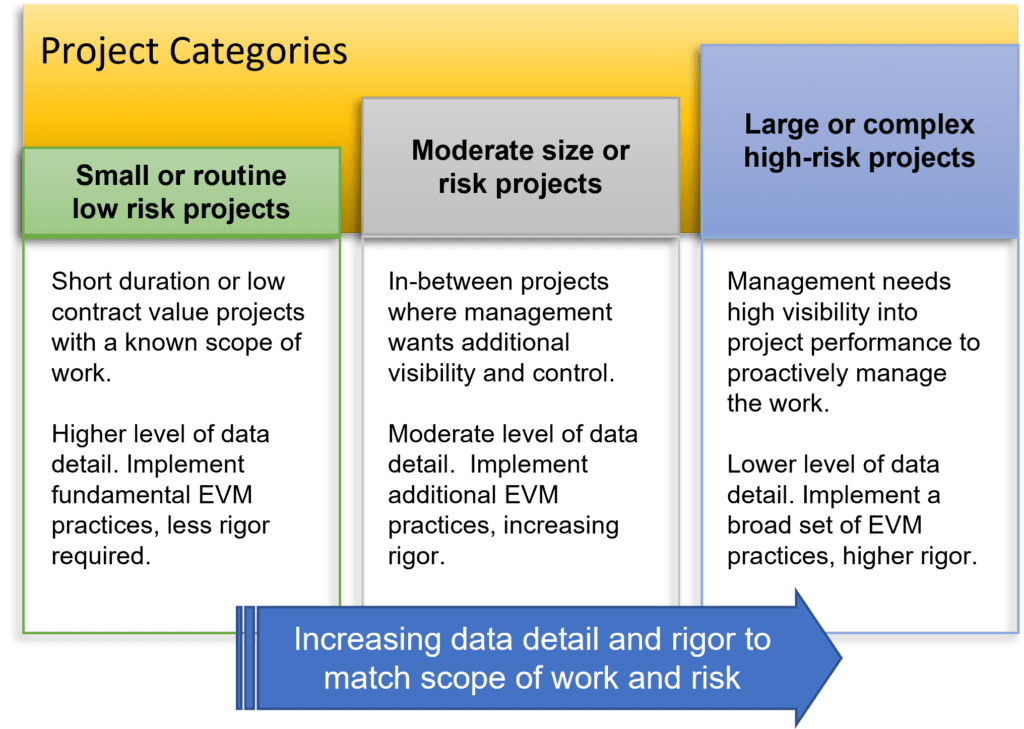Preparing for EVMS Reviews: Strategies for Success with Humphreys & Associates
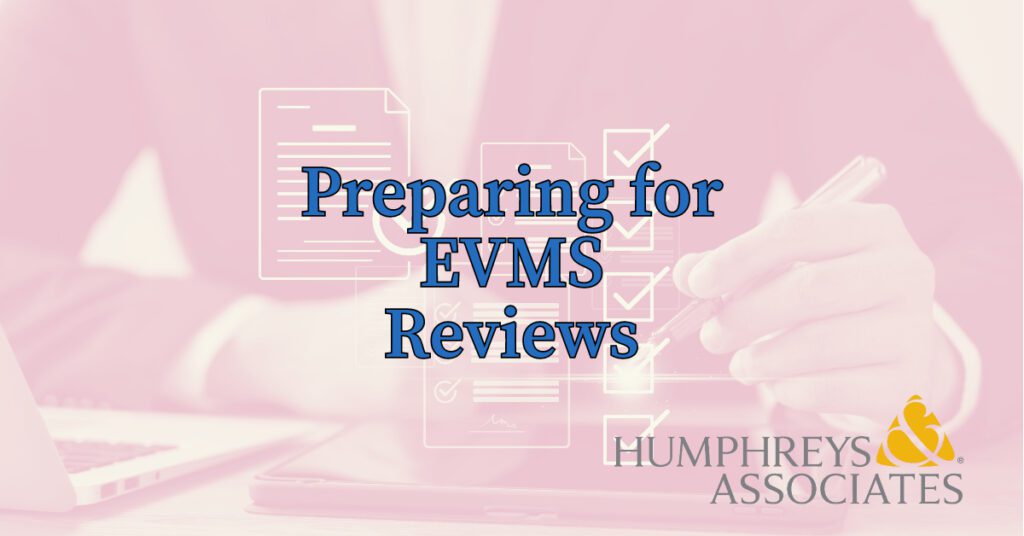
Facing an Earned Value Management System (EVMS) compliance review can be an imposing prospect for any organization with EVMS contractual requirements. With strategic preparation and expert guidance from Humphreys & Associates, renowned for their leadership in earned value consulting, this necessity can be transformed into an opportunity for process improvement to ensure an effective and efficient EVMS can be implemented on any project. This comprehensive guide, the first in a three-part series, takes a closer look at the strategic approach necessary for preparing for a Cognizant Federal Agency (CFA) EVMS compliance review. CFAs include the Defense Contract Management Agency (DCMA) for DoD and NASA contracts and the Department of Energy (DOE). A CFA conducts a formal review to determine whether the contractor’s EVMS is compliant with the EIA-748 Standard for EVMS Guidelines. A formally approved or certified EVMS is an EVMS the CFA has determined to be compliant with the EIA-748 Guidelines.
Key Elements in Preparing for an EVMS Compliance Review
A successful EVMS compliance review is predicated on several fundamental elements. Being well-prepared in these areas can make the difference between a review that goes smoothly and one that uncovers issues that require corrective action.
- Thorough Documentation: Proper documentation is the backbone of any review process. It’s essential to maintain an EVM System Description that explains how the system complies with the EIA-748 Guideline requirements as well as any agency specific EVMS requirements. This includes documented policies and procedures as well as process flowcharts illustrating system inputs and outputs with responsibility assignments.
- Mock Reviews: Conducting internal mock reviews can serve as a rehearsal for the actual review. These practice runs help to uncover any weaknesses in the system and provide a chance to correct them beforehand. Mock reviews also help familiarize the team with the compliance review process, reducing anxiety and ensuring that everyone knows what to expect.
- Continuous Training: Regular and comprehensive training ensures that project personnel are familiar with the EVMS processes, know how to use the EVM data, and understand the importance of their role in maintaining quality schedule and cost data. This training should be updated regularly to reflect any changes in EVMS requirements, software tools, or company procedures.
- Data Integrity: The accuracy and completeness of project data are crucial. Regular validation checks should be conducted to ensure data in the EVMS are valid, reliable, and traceable. This includes verifying the project data aligns with the corporate financial records and that the system accurately reflects the project’s current status.
- Stakeholder Engagement: Effective reviews require the cooperation and understanding of all stakeholders. Engaging them early in the review process helps ensure everyone is on the same page and that the roles and responsibilities are clearly defined. This engagement includes regular communication and involvement in the compliance review preparation process.
Assistance in the Review Preparation Process
Humphreys & Associates provides comprehensive services designed to support organizations throughout the compliance review preparation process. This includes:
- Compliance Review Readiness Assessments: These assessments are crucial in determining the readiness of an organization’s system, personnel, and data quality for a compliance review. The assessment identifies areas of strength and those requiring improvement, enabling targeted action to enhance readiness.
- Preparation Workshops: Workshops conducted by experienced consultants can train and prepare the team for the compliance. These sessions cover everything from the basics of EVM to the nuances of the review process, tailored to the specific needs of the organization.
- Documentation Review: Prior to an compliance review, it’s beneficial to have an external review of the documentation that will be presented. This review can identify areas where additional information is needed and ensure that the documentation accurately reflects the EVMS and compliance with the EIA-748 Guidelines.
- Support Services: During the review, having expert support available can alleviate the challenges that may arise. This includes on-the-spot advice and assistance in addressing the CFA’s questions and concerns. Should the CFA issue formal corrective action requests (CARs), Humphreys & Associates can assist with producing and implementing the corrective action plans (CAPs) to resolve the deficiencies as quickly as possible.
Common EVMS Review Findings and Remediation
There are several common findings that an EVMS compliance review might reveal that could potentially impact an organization’s ability to obtain a formal CFA EVMS compliance approval or certification. Being aware of these potential findings and understanding how to address them is key to success.
- Inadequate Baseline Control: Maintaining a current and accurate performance measurement baseline is essential. When a government review team finds baseline control to be lacking, it’s often due to inadequate processes for incorporating changes into the baseline or failing to maintain traceability of the changes.
- Insufficient Documentation: Documentation gaps can lead to findings of non-compliance. Government review teams need to see evidence that a complete set of processes are in place and that these processes are being followed. This includes having proper version control and evidence of management approvals.
- Data Discrepancies: Differences between what’s reported in the project reports and the actual project data can indicate serious issues with data management systems. Ensuring that the EVMS software is properly configured, data validation checks are routinely performed, and that schedule and cost data align can prevent such discrepancies.
To address and prevent these common issues, Humphreys & Associates recommends a proactive stance, with robust change control processes, continuous enhancement of documented practices, and improvements to data management systems to ensure accuracy and traceability.
Preparing for an EVMS compliance review is a critical task that can significantly impact the management and success of government contracts. With the strategies provided here and the support of Humphreys & Associates, organizations can confidently navigate the EVMS compliance review process.
Explore the nuances of the implementation phase in “Effective EVMS Implementation for Government Contracts: Roles and Challenges,” and enhance your understanding of the certification process in “Navigating EVMS Certification: A Step-by-Step Guide to Compliance.”
Preparing for EVMS Reviews: Strategies for Success with Humphreys & Associates Read Post »

